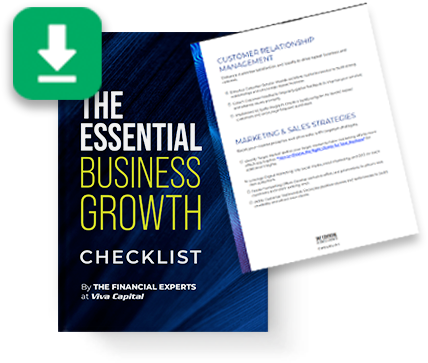
If you’re a small business owner, invoice factoring can be a crucial lifeline when the money runs short, an easy way to accelerate cash flow on an ongoing basis, and so much more. But, how exactly does invoice factoring work, and what makes it so radically different from other funding solutions?
In this article, you’ll get a full breakdown of the process as well as common factoring and security agreement terms, so it’s easy to see how it might fit in with your business plan.
What Are Factoring Agreements?
Sometimes referred to as accounts receivable funding, the invoice factoring process turns your unpaid invoices into immediate cash. You can think of it as getting an advance on your unpaid B2B invoices or selling them to a third party at a discount rate. The Factoring Company (Factor) will act as a creditor and pay you upfront, so you’re not stuck waiting 30, 60, or 90 days for your client to pay. You can use the money to cover payroll, purchase equipment, manage growth-related expenses like marketing, or whatever makes the most sense to you right away. The factoring company will wait for payment and ultimately collect from your debtors.
Your factoring agreement or factoring contract will spell out all the factoring terms involved, so you’ll want to pay close attention to the details just as you would if you were reading a loan offer from a bank.
Common Fees and Terms in Factoring Agreements
Now that you have a general idea of the process, let’s go over a few factoring agreement terms you’re likely to see if you decide to move forward.
Advance Rate
The advance rate is the percentage of the invoice amount you’ll receive upfront. It’s somewhat common to see advance rates of 70 to 80 percent, depending on your industry. For example, if you run a staffing company and you’ve been offered an advance rate of 80 percent, you’d receive up to $8,000 of a $10,000 invoice immediately after you submit documentation to your invoice factoring service, minus any fees the factoring company charges, of course.
This is true with Viva as well, though it’s possible to receive an advance rate of up to 100 percent of your invoice’s value.
Origination Fee
Also known as a Draw Fee, this is a flat rate charged by the factor upfront. It is calculated as a small percentage of your total facility amount, so if you have a $1 million facility with a 1% origination fee, a total of $10,000 will be taken out of the initial funding. It is always important to note small costs like this as they often fall into the background, but add up quickly.
Termination Fee/Default Fee
If at some point during the process, you decide to terminate your agreement, you may be liable for a termination fee in accordance with the predetermined agreement conditions. These fees are typically a percentage of your credit line, so if your credit line is $100,000 and you have a 3% termination fee, you will need to pay $3,000 to end your agreement. These fees typically range from 3% to an astounding 15%, so it is important to read any fine print.
Customer Limit
It probably goes without saying, but it’s less risky to spread advances among several account debtors than it is to put everything available toward a single debtor. For example, you may have $50,000 in advances available, which you could theoretically use on a single invoice for one client, or you could have five clients each with $10,000 in outstanding invoices that you’re taking advances on. If one client owes the full $50,000 and they default on their payment, it’s a serious issue. However, if one of five doesn’t pay his $10,000, it still hurts, but it hurts a whole lot less.
For this reason, you may have a maximum amount you can factor for each of your client accounts at any given time. It’s known as a customer limit.
Your factoring company will usually perform credit checks on your clients to determine if they are a credit risk and how likely they are to pay. This greatly reduces risk overall. Because of this step, you may sometimes have different customer limits across your customer accounts, too.
Factoring Fee
As mentioned earlier, your outstanding invoices are purchased at a discount fee. The amount will vary based on considerations such as the total number of invoices you factor, dollar amounts involved, and the creditworthiness of your clients.
Fee Structure
A factoring contract may use a flat-fee or variable-fee structure. With a variable-fee structure, fees will continue to accrue for as long as the invoice is outstanding. For example, your factoring company may charge you 2.5 percent of an invoice’s value for the first 30 days the balance is outstanding and then 1.75 percent every 30 days thereafter until the invoice is paid.
Flat-fee structures don’t change with each cycle. In that case, you might pay 3 percent for the first 30 days and then 3 percent for the next 30 days, and so forth.
Invoice Aging Report
An invoice aging report is used to analyze the cash flow of your outstanding invoices. They’re usually pulled in standard reporting periods, including the most recent 30, 60, or 90 days. Your factor will use this report to identify the amount owed by your clients.
Notice of Assignment (NOA)
When you sign a factoring agreement, you’re giving the factor the right to collect balances that might otherwise be collectible by you. Because of this, the factor generally has a legal obligation to notify your clients that they should be directing payments to them and that any payments made to you will not satisfy their debt. This is referred to as a notice of assignment (NOA).
While it may sound concerning, it typically accompanies instructions for payment and streamlined billing options, so clients are typically happy with the arrangement and don’t see it any differently than they might if they were paying you directly. However, you may receive inquiries after an initial NOA is sent out if a client wants to confirm the payment instructions they received.
For a deeper understanding of how invoice collection and debt factoring differ — including key distinctions between factoring of debts and traditional debt collection practices — explore our guide on the difference between debt collection and invoice factoring.
Receivables Purchase
You, as a borrower, may also see terms like “sale receivables” or “receivables purchase.” These are both references to the same concept—that you’re selling your invoices, also known as receivables, to the factor. Bear in mind that the transaction may only involve some of your invoices, depending on how your factor works and the decisions you make.
Recourse and Non-Recourse Factoring
Despite credit checks, there will always be some risk of insolvency or bankruptcy. Your factoring company will not automatically accept the risk of non-paying clients. Instead, you’ll see two distinct types of factoring: recourse and non-recourse.
Most factoring agreements relate to recourse factoring. It means you’re ultimately responsible for any unpaid balances if your client fails to pay in full by the maturity deadline due to financial inability or other limiting factors.
With a non-recourse factoring agreement, you won’t be held liable for non-paying clients, but you’ll normally pay a higher fee to factors.
Representations and Warranties
Your factor will want assurances that your business is operating legally and is solvent. As part of your factoring agreement, you’ll be asked to make statements that relate to this, known as representations or a guarantor, that offer security against loss. This is done to protect the Factor if any statements you’ve made are untrue or in the event of an Event of Default.
Reserve Account
For easier tracking, any funds paid by your clients to your factor will be placed in escrow in a reserve account. That way, it’s easy to track what’s been paid, what’s due, and any amount still owed to you.
Schedule of Accounts
Because you may not factor all of your invoices, your factoring company will want a schedule of accounts report that outlines all the invoices you’d like to factor.
Security Interests
Security interests are common in funding. The term references assets that serve as collateral and can be leveraged in the event a balance goes unpaid. Common examples include real estate, equipment, inventory, and intellectual property.
Setup and Renewal Fees
Although not all factoring companies charge them, you should be on the lookout for costs associated with opening an account and any recurring charges to keep the account open.
Termination Provisions
While not all factoring companies require you to stay with them for a specific length of time, your factoring agreement will likely have a section on termination provisions, regardless. It will spell out how to end the agreement and any termination fees involved.
Wire Fee
Depending on the factoring company you choose to work with, you may have the option to choose how quickly you are paid. If you’re ok waiting a few days for payment, ACH transfer is generally available and will usually be free or low-cost. Conversely, wire transfers may be used if you need payment right away, but there’s usually a nominal fee for this. To help ensure payments are processed quickly and smoothly, it’s important to focus on avoiding invoice disputes through clear and accurate billing practices.
The Standard Factoring Agreement Process
If you’re considering leveraging invoice factoring, your first step is to become established with a factoring company. That way, you can take care of all the account-level details, so you’re able to factor when you need to. When you’re ready to factor, the process is as follows.
- Your customer requests work or goods from your company.
- You contact your factoring company so they can perform a credit check and verify that the client’s invoice will qualify.
- Your company completes the work or delivers the goods as requested.
- You sell the approved invoice to your factoring company and get paid right away.
- Your factoring company handles the collections process, gets paid, and sends you any remaining money owed.
As technology continues to evolve, businesses are exploring innovative solutions like blockchain invoice factoring to enhance transparency, security, and efficiency in the factoring process.
How Do Companies Qualify for Factoring?
Qualifying for factoring with Viva is easy! Simply request a complimentary rate quote.
How Factoring Can Support Business Growth Strategies
Factoring provides more than just short-term relief—it offers a strategic way to support long-term growth. When a company sells its accounts receivables to a factor, it receives working capital without taking on debt, unlike a traditional loan from a financial institution. This liquidity allows a business to take on new projects, invest in operations, and meet increasing financial obligations without waiting for customers to pay their invoices.
Because factoring involves converting invoices at a discount, funds are available almost immediately after the invoice is verified. This predictability in cash flow supports hiring, purchasing equipment, and expanding into new markets. It’s especially useful during periods of rapid growth when delayed payments can stall progress.
It’s important to understand that factoring agreements and contracts vary by provider. Terms and conditions—such as contract terms, fees, or whether the agreement is without recourse—may vary from factor to factor, so always compare factoring offers and review each invoice factoring agreement carefully before signing. Used strategically, business factoring is a form of financing that helps companies move forward without financial disruption.
Invoice Factoring vs. Invoice Financing
Sometimes invoice factoring is confused with invoice financing, but they’re really two distinct things. When you factor, you’re not taking on debt that you have to pay back with interest. You’re selling your invoices and are free to move forward. When you use invoice financing, your invoices are still yours. They’re just used as proof that you’ll have the cash to pay the financing company back with interest. APRs can range from 10 to 60 percent.
Bank Financing vs. Invoice Factoring
Businesses can receive many different types of bank financing from loans through lines of credit. Although you’ll usually pay less for a traditional bank loan, many small businesses don’t qualify for them or don’t get the amount of funding they need.
How Can Business Owners be Eligible for Factoring?
Most business owners are eligible for factoring. Even startups and those who don’t have strong credit can qualify because the credit and strength of the client paying the invoice is weighted more.
How Does a Factoring Company Buy Invoices?
As covered earlier, most factoring companies don’t send you 100 percent of the invoice’s value right away. Instead, you’ll usually receive a portion of the invoice’s value to start, known as the factoring rate. It’s common to see advances of 70 to 80 percent.
When your client pays their invoice, the factoring company sends you the remaining balance minus any factoring fees.
Important Things to Consider with Factoring Agreements
Now that you have a clear understanding of how factoring agreements work, let’s go over a few points to consider when you’re looking at contracts, so you can be sure you’re getting a good deal.
- Watch for volume minimums. They can increase your expenses and force you to factor when you don’t need it.
- Compare fees. It’s ok to shop around to get a fair price, but also consider value-added services your factoring company is providing that you might not get elsewhere.
- Confirm speed of payment. Not all factoring companies will pay when you need them to, so be sure to read the payment terms carefully.
- Work with an industry specialist. When you work with someone who knows your industry, they can tailor their solutions to your needs better.
Request a Free Factoring Quote
Founded in 1999, Viva Capital has expertise and tailored programs across a wide variety of industries. If you think factoring might be the best choice for your business, request a free rate quote.
- How Mid-Sized Companies Use Factoring to Drive Growth - May 23, 2025
- 10 Best Cash Flow and Budgeting Tools for Business Owners - May 2, 2025
- Business Factoring Success Stories: How Real Brands Benefit - March 31, 2025



